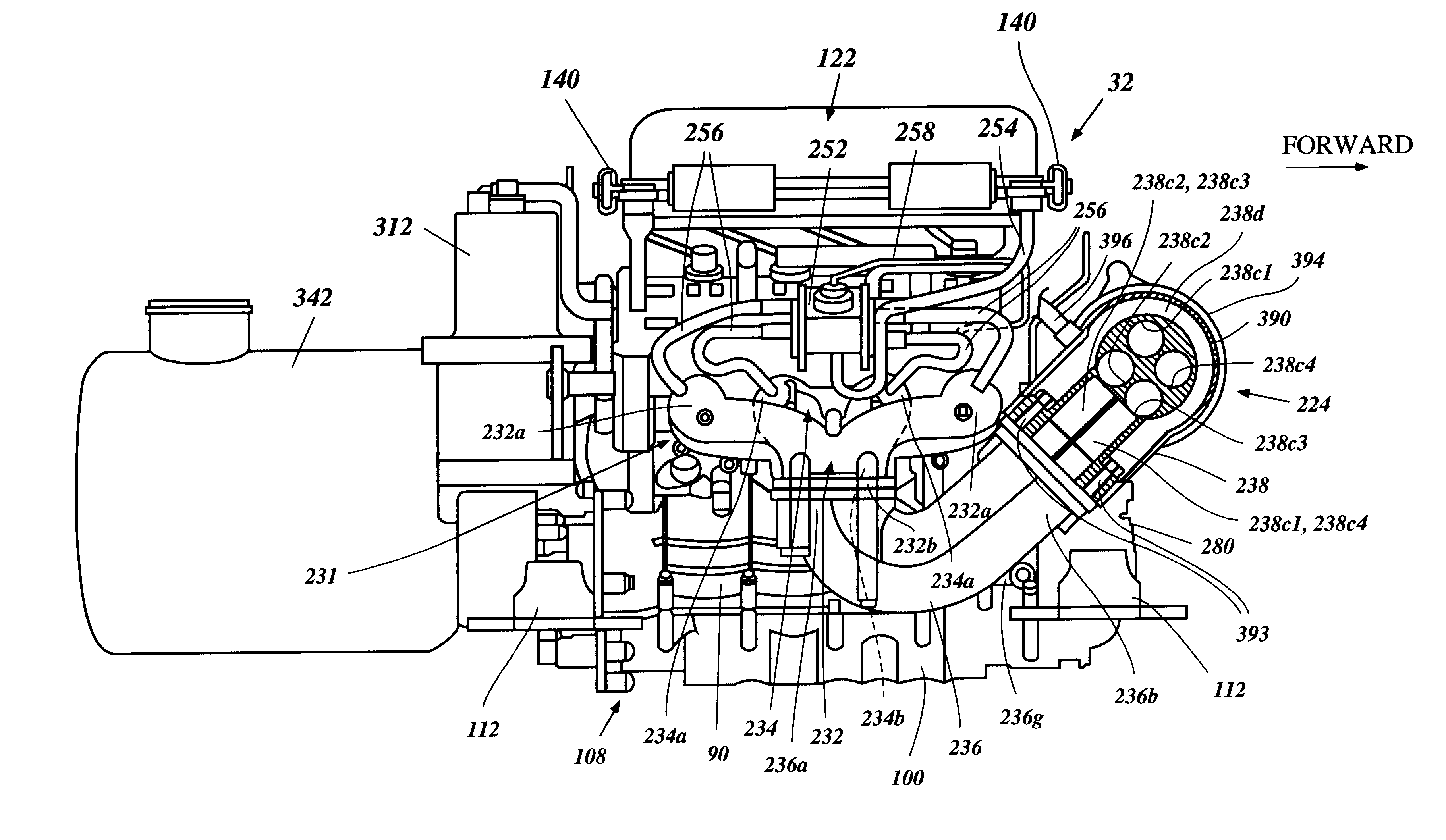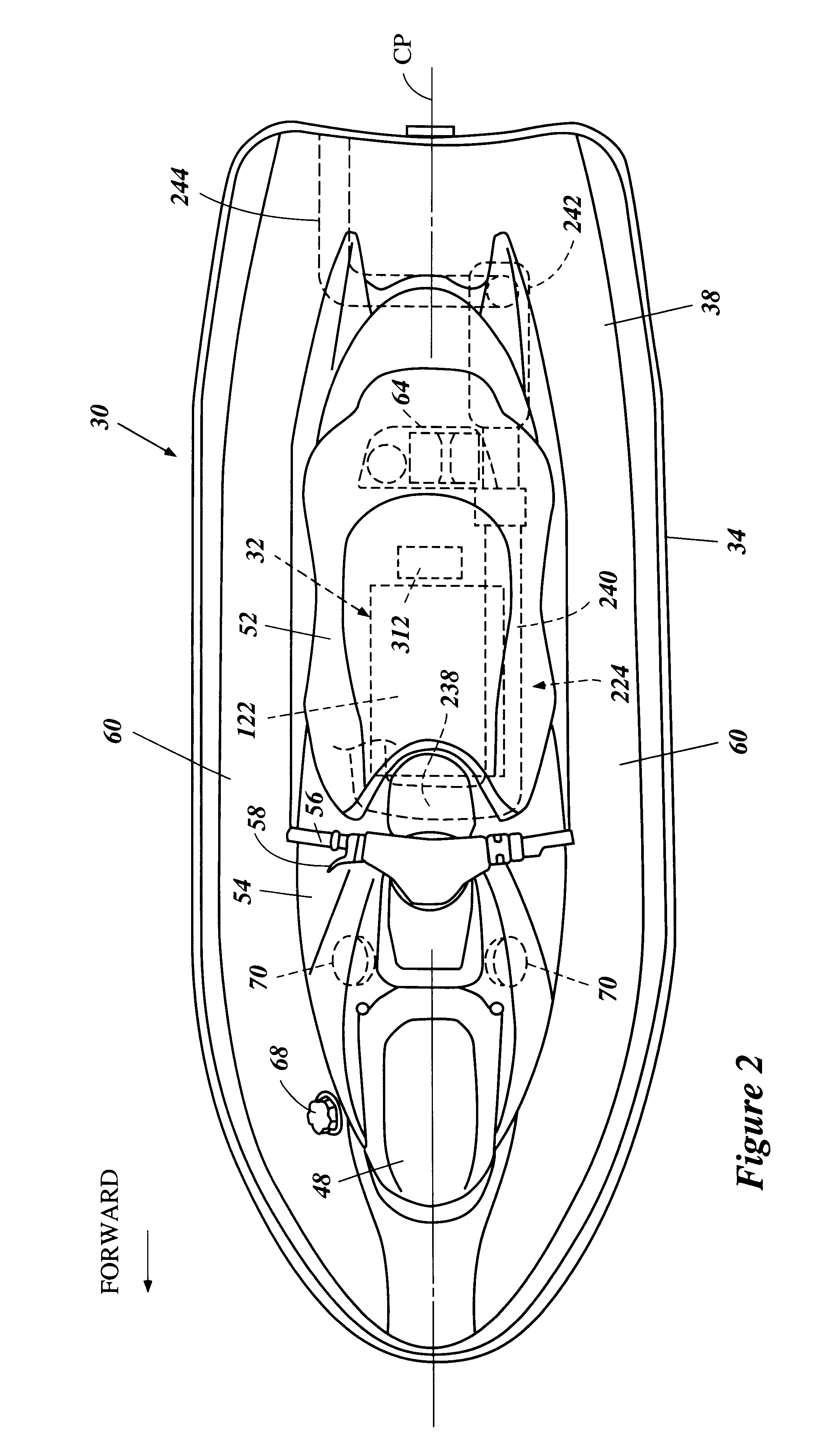Exhaust system for 4-cycle engine of small watercraft
a technology of exhaust system and watercraft, which is applied in the direction of motor-driven power plants, special-purpose vessels, vessel construction, etc., can solve the problems of less height, less discomfort in sitting in a position, and reduced the ability of the rider to absorb the impact force with his or her legs
- Summary
- Abstract
- Description
- Claims
- Application Information
AI Technical Summary
Benefits of technology
Problems solved by technology
Method used
Image
Examples
Embodiment Construction
With reference to FIGS. 1 to 18, an overall configuration of a personal watercraft 30 will be described.
The watercraft 30 employs an internal combustion engine 32 configured in accordance with a preferred embodiment of the present invention. The described engine configuration has particular utility with the personal watercraft, and thus, is described in the context of the personal watercraft. The engine configuration, however, can be applied to other types of watercrafts as well, such as, for example, small jet boats.
The personal watercraft 30 includes a hull 34 formed with a lower hull section 36 and an upper hull section or deck 38. Both the hull sections 36, 38 are made of, for example, a molded fiberglass reinforced resin or a sheet molding compound. The lower hull section 36 and the upper hull section 38 are coupled together to define an internal cavity 40 (FIG. 3). A gunnel 42 defines an intersection of both the hull sections 36, 38.
With reference to FIGS. 2 and 3, the hull 34...
PUM
 Login to View More
Login to View More Abstract
Description
Claims
Application Information
 Login to View More
Login to View More - R&D
- Intellectual Property
- Life Sciences
- Materials
- Tech Scout
- Unparalleled Data Quality
- Higher Quality Content
- 60% Fewer Hallucinations
Browse by: Latest US Patents, China's latest patents, Technical Efficacy Thesaurus, Application Domain, Technology Topic, Popular Technical Reports.
© 2025 PatSnap. All rights reserved.Legal|Privacy policy|Modern Slavery Act Transparency Statement|Sitemap|About US| Contact US: help@patsnap.com



